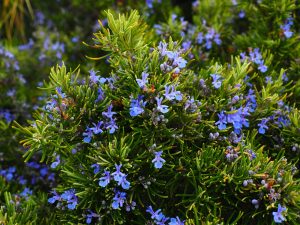The botanical garden on the island of Lokrum located just 600 m outside the harbor of Dubrovnik, just a 10 minute boat trip. These are the cloister gardens of the Benedictine Monastery – which was founded in 1023 – the island is now a popular tourist attraction and offers a botanical garden and a Napoleonic Fortress (Fort Royal Castle) on the highest point of the island – build by the French.
The name Lokrum comes from the Latin, ‘acrumen’, meaning sour fruit, this derives from the fact that traditionally exotic plants were cultivated on the island, a tradition started in the time of the Benedictine’s until 1808 when the last Benedictine’s left the island.
According to legend, Richard the Lionheart was shipwrecked in 1192 after returning home from the crusades and was cast safely ashore on Lokrum. He pledged to build a church on the island but, at the plea of Dubrovnik citizens, the church was built on the nearby mainland in the town of Dubrovnik instead.
Archduke Maximilian Ferdinand of Habsburg had a mansion built on the island in 1859 with a magnificent garden laid out, criss-crossed with pathways, full of amazing plants and botanical wonders. The island was originally purchased by Maximilian’s wife Archduchess Charlotte of Austria, with part of her marriage dowry, and she retained ownership of the island even after she and her husband became Emperor and Empress of Mexico. After the Emperor Maximilian’s execution the island was surrendered to the Habsburg Family in a deal struck between Franz Joseph I of Austria and Leopold II of Belgium. The island was given to Archduchess Elisabeth Marie of Austria as part of her marriage dowry in later years the state of Yugoslavia claimed it under the Treaty of Saint-Germain.
In 1959 a Botanical Garden was founded on Lokrum which contains native and imported, tropical and subtropical plants, and other vegetation originating from Australia and South America. The island is also inhabited by families of peacocks brought over by Maximilian from the Canary Islands.
The island is now a popular destination with visitors to Dubrovnik. A restaurant is located in the former monastery, and walking routes round the island are marked out. There is also a nudist beach at the south-eastern end of the island.
On the eastern side of the island, protected from the open sea, there is a small natural harbour. The island is covered in thick Mediterranean flora and woods – laurel, oak, pines, cypress and black pines, there are also olives, agave’s, cacti, magnolia and palms. On the southern part of the island there is a small salt lake, 10 m deep, known as “the Dead Sea” (Mrtvo More). Nearby there is the deserted Benedictine monastery, founded in 1023. The triple-naved basilica, and a 14th-century part of the monastery were badly damaged in the 1667 earthquake. Since 1975 Lokrum is a Nature Reserve and a Special Forest Vegetation Reserve.
Due to the fact that quality wood material was intensively exploited in the past, the bigger part of the island is actually covered by its degradation stages: lower woods and impenetrable underwood (macchia). The following degradation stage of the forest is the garrigue, an open bush in which low wooden species (heather, rosemary) prevail. There also exist some types of extreme degradation stages of vegetation, rocky ground meadows. The vegetation of rocks and dry stone walls, coastal crests, as well as the weed vegetation, are interesting too.
Lokrum offers favourable ecological conditions for the development of a rich and heterogeneous animal world, which has not yet been sufficiently investigated. Here, several groups of land vertebrates are presented. The European turtle (Testudo hermanni) domiciles in dry, stony locations overgrown with bushes. It is unusually resistant and survives lesions particularly well; it grows slowly and lives for more than a hundred years. It feeds mainly on plants, but also on insects and dead animals – since 1965 the turtles are protected by law.
The shy and quick big green lizard (Lacerta trilineata) is the biggest Middle European lizard, up to 40 cm long. It domiciles in warm and stony areas overgrown with low vegetation, and it feeds on insects and their larvae, spiders and small worm-like animals.
The domestic gecko (Hemidactylus turcicus) can be often found in buildings. Quick and brisk, it is active by night, when it feeds on insects and spiders with soft coverings.
The snake lizard (Ophisaurus apadus) is up to 110 cm long, with a body covered with hard scales. Its front feet are stunted, and the back ones are visible only in the form of two little scales. It lives on open rocky areas without vegetation, moves swiftly, hides under the stones and feeds on various animal foods.
Lokrum is a special reserve of forest vegetation under the protection of UNESCO. Therefore, it is not allowed to endanger in any way the natural and cultural goods on the island, to throw away waste, bring dogs or light fire and smoking is prohibited, furthermore, it is not allowed to stay on the island overnight.
Address
Island Lokrum
take a ferry boat from the harbour of Dubrovnik
the trip takes just 10 minutes
Contact
telephone +385 20 311 738
e-mail lokrum@lokrum.hr
website www.lokrum.hr


